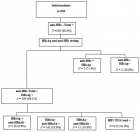Abstract
Research Article
Arid3a regulates mesoderm differentiation in mouse embryonic stem cells
Haley O Tucker*, Melissa Popowski, Bum-kyu Lee, Vishwanath R Iyer and Cathy Rhee
Published: 07 September, 2017 | Volume 1 - Issue 1 | Pages: 052-062
Research into regulation of the differentiation of stem cells is critical to understanding early developmental decisions and later development growth. The transcription factor ARID3A previously was shown to be critical for trophectoderm and hematopoetic development. Expression of ARID3A increases during embryonic differentiation, but the underlying reason remained unclear. Here we show that Arid3a null embryonic stem (ES) cells maintain an undifferentiated gene expression pattern and form teratomas in immune-compromised mice. However, Arid3a null ES cells differentiated in vitro into embryoid bodies (EBs) significantly faster than control ES cells, and the majority forming large cystic embryoid EBs. Analysis of gene expression during this transition indicated that Arid3a nulls differentiated spontaneously into mesoderm and neuroectoderm lineages. While young ARID3A-deficient mice showed no gross tissue morphology, proliferative and structural abnormalities were observed in the kidneys of older null mice. Together these data suggest that ARID3A is not only required hematopoiesis, but is critical for early mesoderm differentiation.
Read Full Article HTML DOI: 10.29328/journal.jsctt.1001005 Cite this Article Read Full Article PDF
References
- Martello G, Smith A. The nature of embryonic stem cells. Annu Rev Cell Dev Biol. 2014; 30; 647-675. Ref.: https://goo.gl/2fQ2im
- Hemberger M, Dean W, Reik W. Epigenetic dynamics of stem cells and cell lineage commitment: digging Waddington’s canal. Nat Rev Mol Cell Biol. 2009; 10; 526-537. Ref.: https://goo.gl/zmVgwx
- Nixon JC, Ferrell S, Miner C, Oldham AL, Hochgeschwender U, et al. Transgenic mice expressing dominant-negative Arid3a exhibit defects in B1 B cells. J Immunol Baltim Md. 2008; 181; 6913-6922. Ref.: https://goo.gl/suWSPu
- Webb CF, Bryant J, Popowski M, Allred L, Kim D, et al. The ARID family transcription factor Arid3a is required for both hematopoietic stem cell and B lineage development. Mol Cell Biol. 2011; 31; 1041-1053. Ref.: https://goo.gl/wGgErP
- Kim PG, Canver MC, Rhee C, Ross SJ, Harriss JV, et al. Interferon-α signaling promotes embryonic HSC maturation. Blood. 2016; 128: 204-216. Ref.: https://goo.gl/nTGHsW
- Rhee C, Edwards M, Dang C, Harris J, Brown M, et al. ARID3A is required for mammalian placenta development. Dev Biol. 2017; 422: 83-91. Ref.: https://goo.gl/Dq2rku
- Rhee C, Lee BK, Beck S, Anjum A, Cook KR, Popowski M, et al. Corrigendum: Arid3a is essential to execution of the first cell fate decision via direct embryonic and extraembryonic transcriptional regulation. Genes Dev. 2015; 29: 1890. Ref.: https://goo.gl/aSTe3c
- An G, Miner CA, Nixon JC, Kincade PW, Bryant J, et al. Loss of Arid3a/ARID3a function promotes developmental plasticity. Stem Cells Dayt Ohio. 2010; 28: 1560-1567. Ref.: https://goo.gl/NFFfUf
- Popowski M, Templeton TD, Lee BK, Rhee C, Li H, et al. Arid3a/Arid3A Acts as a Barrier to Somatic Cell Reprogramming through Direct Regulation of Oct4, Sox2, and Nanog. Stem Cell Rep. 2014; 2: 26-35. Ref.: https://goo.gl/ZUgmtk
- Wang J, Rao S, Chu J, Shen X, Levasseur DN, et al. A protein interaction network for pluripotency of embryonic stem cells. Nature. 2006; 444: 364-368. Ref.: https://goo.gl/aWnkHB
- Itskovitz-Eldor J, Schuldiner M, Karsenti D, Eden A, Yanuka O, et al. Differentiation of human embryonic stem cells into embryoid bodies compromising the three embryonic germ layers. Mol Med. 2000; 6: 88-95. Ref.: https://goo.gl/Vrwepk
- Kurosawa H. Methods for Inducing Embryoid Body Formation: In Vitro Differentiation System of Embryonic Stem Cells. J Biosci Bioeng. 2007; 103: 389-398. Ref.: https://goo.gl/YhYLHo
- Wang R, Clark R, Bautch VL. Embryonic stem cell-derived cystic embryoid bodies form vascular channels: an in vitro model of blood vessel development. Dev Camb Engl. 1992; 114: 303-316. Ref.: https://goo.gl/daxwVF
- Doetschman TC, Eistetter H, Katz M, Schmidt W, Kemler R. The in vitro development of blastocyst-derived embryonic stem cell lines: formation of visceral yolk sac, blood islands and myocardium. J Embryol Exp Morphol. 1985; 87: 27-45. Ref.: https://goo.gl/WKVyCQ
- Yasuda E, Seki Y, Higuchi T, Nakashima F, Noda T, et al. Development of cystic embryoid bodies with visceral yolk-sac-like structures from mouse embryonic stem cells using low-adherence 96-well plate. J Biosci Bioeng. 2009; 107: 442-446. Ref.: https://goo.gl/a4Pi8d
- Ng YS, Ramsauer M, Loureiro RMB, D’Amore PA. Identification of genes involved in VEGF-mediated vascular morphogenesis using embryonic stem cell-derived cystic embryoid bodies. Lab Invest. 2004; 84: 1209-1218. Ref.: https://goo.gl/6QALJf
- Fuegemann CJ, Samraj AK, Walsh S, Fleischmann BK, Jovinge S, et al. Differentiation of Mouse Embryonic Stem Cells into Cardiomyocytes via the Hanging-Drop and Mass Culture Methods. Curr Protoc Stem Cell Biol. Ref.: https://goo.gl/fKxcSo
- Kim D, Tucker PW. A regulated nucleocytoplasmic shuttle contributes to Arid3a’s function as a transcriptional activator of immunoglobulin genes. Mol Cell Biol. 2006; 26: 2187-2201. Ref.: https://goo.gl/JGdVXL
- Schmidt C, Kim D, Ippolito GC, Naqvi HR, Probst L, et al. Signalling of the BCR is regulated by a lipid rafts-localised transcription factor, Bright. EMBO J. 2009; 28: 711-724. Ref.: https://goo.gl/9ehCcC
- Ma K, Araki K, Ichwan SJ, Suganuma T, Tamamori-Adachi M, et al. E2FBP1/DRIL1, an AT-rich interaction domain-family transcription factor, is regulated by p53. Mol. Cancer Res. 2003; 1: 438-444. : https://goo.gl/c9pZrR
- Peeper DS, Shvarts A, Brummelkamp T, Douma S, Koh EY, et al. A functional screen identifies hDRIL1 as an oncogene that rescues RAS-induced senescence. Nat Cell Biol. 2002; 4:148-153. Ref.: https://goo.gl/8fQDEL
- Lin L, Zhou Z, Zheng L, Alber S, Watkins S, et al. Cross talk between Id1 and its interactive protein Dril1 mediate fibroblast responses to transforming growth factor-beta in pulmonary fibrosis. Am J Pathol. 2008; 173: 337-346. Ref.: https://goo.gl/uCbTzr
- Zong RT, Tucker PW, Das C. Regulation of matrix attachment region-dependent, lymphocyte-restricted transcription through differential localization within promyelocytic leukemia nuclear bodies. EMBO J. 2000; 19: 4123-4133. Ref.: https://goo.gl/W31L98
- Lin D, Ippolito GC, Zong RT, Bryant J, Koslovsky J, et al. Arid3a/ARID3A contributes to chromatin accessibility of the immunoglobulin heavy chain enhancer. Mol Cancer. 2007; 6: 23. Ref.: https://goo.gl/jAvdqX
- Webb CF, Ratliff ML, Powell R, Wirsig-Wiechmann CR, Lakiza O, et al. A developmentally plastic adult mouse kidney cell line spontaneously generates multiple adult kidney structures. Biochem Biophys Res Commun. 2015; 463: 1334-1340. Ref.: https://goo.gl/o3Qa7N
- Bosnali M, Münst B, Thier M, Edenhofer F. Deciphering the stem cell machinery as a basis for understanding the molecular mechanism underlying reprogramming. Cell Mol Life Sci. 2009; 66: 3403-3420. Ref.: https://goo.gl/FTXrNa
- Chambers I. The Molecular Basis of Pluripotency in Mouse Embryonic Stem Cells. Cloning Stem Cells. 2004; 6, 386-391. Ref.: https://goo.gl/6YBo8d
- Kopp JL, Ormsbee BD, Desler M, Rizzino A. Small Increases in the Level of Sox2 Trigger the Differentiation of Mouse Embryonic Stem Cells. STEM CELLS. 2008; 26: 903-911. Ref.: https://goo.gl/zKL2TW
- Rhee C, Lee BK, Beck S, Anjum A, Cook KR, et al. Arid3a is essential to execution of the first cell fate decision via direct embryonic and extraembryonic transcriptional regulation. Genes Dev. 2014; 28: 2219-2232. Ref.: https://goo.gl/GV6Bb3
- Nagy A. Manipulating the Mouse Embryo: A Laboratory Manual, Third Edition. 2002. Ref.: https://goo.gl/vpdDo1
Figures:

Figure 1
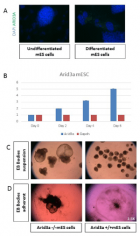
Figure 2

Figure 3
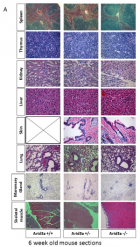
Figure 4
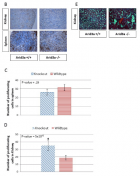
Figure 5
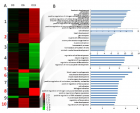
Figure 6
Similar Articles
-
The Femoral Head of Patients with Hip Dysplasia is not as Osteogenic as Iliac Crest Bone LocationPhilippe Hernigou*,Yasuhiro Homma,Arnaud Dubory,Jacques Pariat,Damien Potage,Charles Henri Flouzat Lachaniette,Nathalie Chevallier,Helene Rouard . The Femoral Head of Patients with Hip Dysplasia is not as Osteogenic as Iliac Crest Bone Location. . 2017 doi: 10.29328/journal.jsctt.1001001; 1: 001-007
-
Rhabdomyoblasts in Pediatric Tumors: A Review with Emphasis on their Diagnostic UtilityGiuseppe Angelico*,Eliana Piombino,Giuseppe Broggi,Fabio Motta,Saveria Spadola. Rhabdomyoblasts in Pediatric Tumors: A Review with Emphasis on their Diagnostic Utility . . 2017 doi: 10.29328/journal.jsctt.1001002; 1: 008-016
-
Surgical Implantation of Stem Cells in Heart Failure Patients due to Idiophatic CardiomyopathyBenetti Federico*,Natalia Scialacomo,Enrique Mariani,Luis Geffner,Bruno Benetti Eng1,Daniel Brusich,Yan Duarte. Surgical Implantation of Stem Cells in Heart Failure Patients due to Idiophatic Cardiomyopathy. . 2017 doi: 10.29328/journal.jsctt.1001003; 1: 017-027
-
Enhancing adipose stem cell chondrogenesis: A study on the roles of dexamethasone, transforming growth factor β3 and ascorbate supplements and their combinationBernard J Van Wie*,Arshan Nazempour##,Chrystal R Quisenberry##,Nehal I Abu-Lail. Enhancing adipose stem cell chondrogenesis: A study on the roles of dexamethasone, transforming growth factor β3 and ascorbate supplements and their combination. . 2017 doi: 10.29328/journal.jsctt.1001004; 1: 028-051
-
Arid3a regulates mesoderm differentiation in mouse embryonic stem cellsHaley O Tucker*,Melissa Popowski,Bum-kyu Lee,Vishwanath R Iyer,Cathy Rhee. Arid3a regulates mesoderm differentiation in mouse embryonic stem cells. . 2017 doi: 10.29328/journal.jsctt.1001005; 1: 052-062
-
Nicotinamide as a treatment option of Age-Related Macular DegenerationChristine Skerka*,Yuchen Lin,Peter F. Zipfel. Nicotinamide as a treatment option of Age-Related Macular Degeneration. . 2017 doi: 10.29328/journal.jsctt.1001006; 1: 063-065
-
Intraepidermal Injections of Autologous Epidermal Cell Suspension: A new promising approach to Dermatological Disorders. Preliminary StudyFabio Rinaldi*,Elisa Borsani,Luigi Fabrizio Rodella,Elisabetta Sorbellini,Rita Rezzani,Daniela Pinto,Barbara Marzani,Giovanna Tabellini,Mariangela Rucco. Intraepidermal Injections of Autologous Epidermal Cell Suspension: A new promising approach to Dermatological Disorders. Preliminary Study. . 2017 doi: 10.29328/journal.jsctt.1001007; 1: 066-070
-
Stemness of Mesenchymal Stem CellsTong Ming Liu*. Stemness of Mesenchymal Stem Cells. . 2017 doi: 10.29328/journal.jsctt.1001008; 1: 071-073
-
Stem cells in heart failure some considerationsFederico Benetti*,Natalia Scialacomo,Bruno Benetti. Stem cells in heart failure some considerations. . 2018 doi: 10.29328/journal.jsctt.1001009; 2: 001-003
-
Stem cells in patients with heart failure experienceBenetti Federico*,Natalia Scialacomo. Stem cells in patients with heart failure experience. . 2018 doi: 10.29328/journal.jsctt.1001010; 2: 004-014
Recently Viewed
-
Association Between Electrocardiographic Abnormalities and In-Hospital Adverse Outcome in COVID-19 PatientsAnjuman Begum*, Wadud Chowdhury, Suman KS, Arnab KC, Md. Akteruzzaman, Barua Sushanta. Association Between Electrocardiographic Abnormalities and In-Hospital Adverse Outcome in COVID-19 Patients. J Cardiol Cardiovasc Med. 2024: doi: 10.29328/journal.jccm.1001196; 9: 148-152
-
Maximizing the Potential of Ketogenic Dieting as a Potent, Safe, Easy-to-Apply and Cost-Effective Anti-Cancer TherapySimeon Ikechukwu Egba*,Daniel Chigbo. Maximizing the Potential of Ketogenic Dieting as a Potent, Safe, Easy-to-Apply and Cost-Effective Anti-Cancer Therapy. Arch Cancer Sci Ther. 2025: doi: 10.29328/journal.acst.1001047; 9: 001-005
-
Parents’ perception of the school nurse’s roleDiane Gillooly*,Ganga Mahat,Patricia Paradiso. Parents’ perception of the school nurse’s role. J Adv Pediatr Child Health. 2020: doi: 10.29328/journal.japch.1001021; 3: 064-067
-
Plant growth, Yield and Leaf Nutritional value of Jute (Corchorus olitorius L.) as Influenced by Banana Peel levels under Salt Stress conditions in Coastal region of CameroonMathias Julien Hand*,Chimène Fanta Abib,Kingsley Mbi Tabi,Alphonse Ervé Nouck,Libert Brice Tonfack,Victor Désiré Taffouo,Emmanuel Youmbi. Plant growth, Yield and Leaf Nutritional value of Jute (Corchorus olitorius L.) as Influenced by Banana Peel levels under Salt Stress conditions in Coastal region of Cameroon. J Plant Sci Phytopathol. 2024: doi: 10.29328/journal.jpsp.1001145; 8: 131-140
-
Dynamics of Siberian Fir Stands in Forest Ecosystems of Eastern Sayan SpursBazhina Elena Vasil’evna*,Pavel I Aminev. Dynamics of Siberian Fir Stands in Forest Ecosystems of Eastern Sayan Spurs. J Plant Sci Phytopathol. 2024: doi: 10.29328/journal.jpsp.1001146; 8: 141-143
Most Viewed
-
Evaluation of Biostimulants Based on Recovered Protein Hydrolysates from Animal By-products as Plant Growth EnhancersH Pérez-Aguilar*, M Lacruz-Asaro, F Arán-Ais. Evaluation of Biostimulants Based on Recovered Protein Hydrolysates from Animal By-products as Plant Growth Enhancers. J Plant Sci Phytopathol. 2023 doi: 10.29328/journal.jpsp.1001104; 7: 042-047
-
Sinonasal Myxoma Extending into the Orbit in a 4-Year Old: A Case PresentationJulian A Purrinos*, Ramzi Younis. Sinonasal Myxoma Extending into the Orbit in a 4-Year Old: A Case Presentation. Arch Case Rep. 2024 doi: 10.29328/journal.acr.1001099; 8: 075-077
-
Feasibility study of magnetic sensing for detecting single-neuron action potentialsDenis Tonini,Kai Wu,Renata Saha,Jian-Ping Wang*. Feasibility study of magnetic sensing for detecting single-neuron action potentials. Ann Biomed Sci Eng. 2022 doi: 10.29328/journal.abse.1001018; 6: 019-029
-
Pediatric Dysgerminoma: Unveiling a Rare Ovarian TumorFaten Limaiem*, Khalil Saffar, Ahmed Halouani. Pediatric Dysgerminoma: Unveiling a Rare Ovarian Tumor. Arch Case Rep. 2024 doi: 10.29328/journal.acr.1001087; 8: 010-013
-
Physical activity can change the physiological and psychological circumstances during COVID-19 pandemic: A narrative reviewKhashayar Maroufi*. Physical activity can change the physiological and psychological circumstances during COVID-19 pandemic: A narrative review. J Sports Med Ther. 2021 doi: 10.29328/journal.jsmt.1001051; 6: 001-007

HSPI: We're glad you're here. Please click "create a new Query" if you are a new visitor to our website and need further information from us.
If you are already a member of our network and need to keep track of any developments regarding a question you have already submitted, click "take me to my Query."







